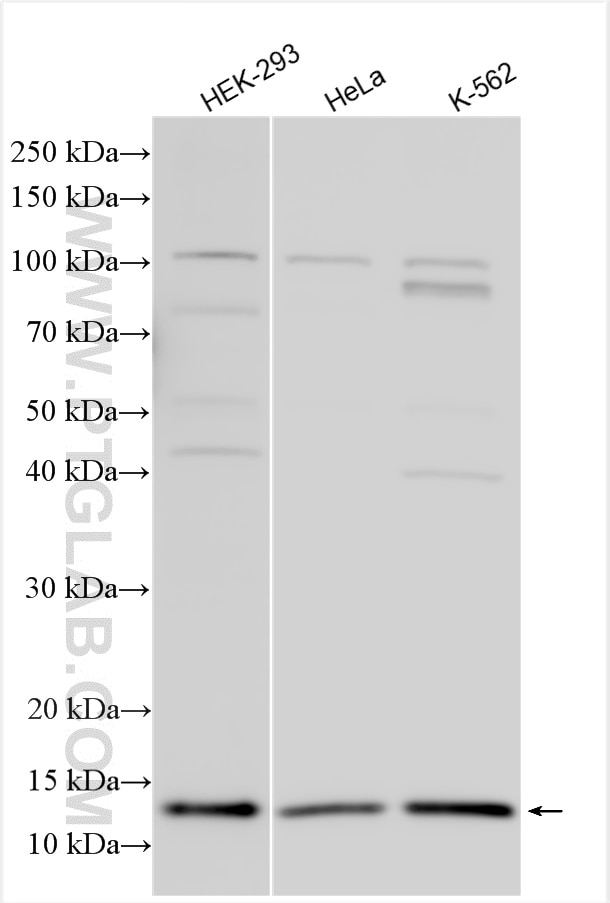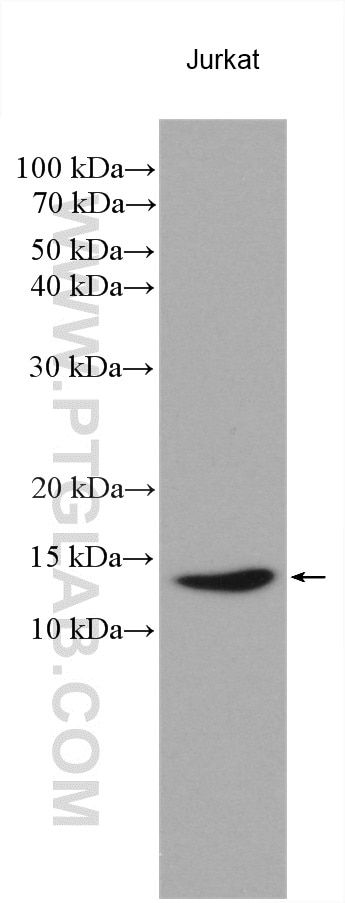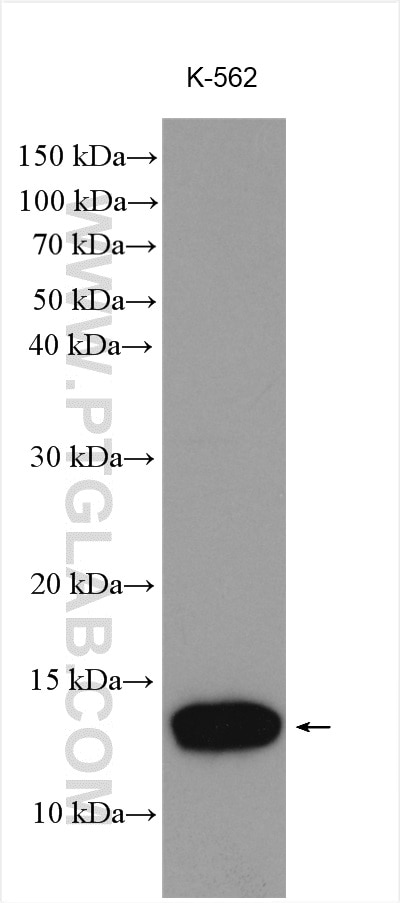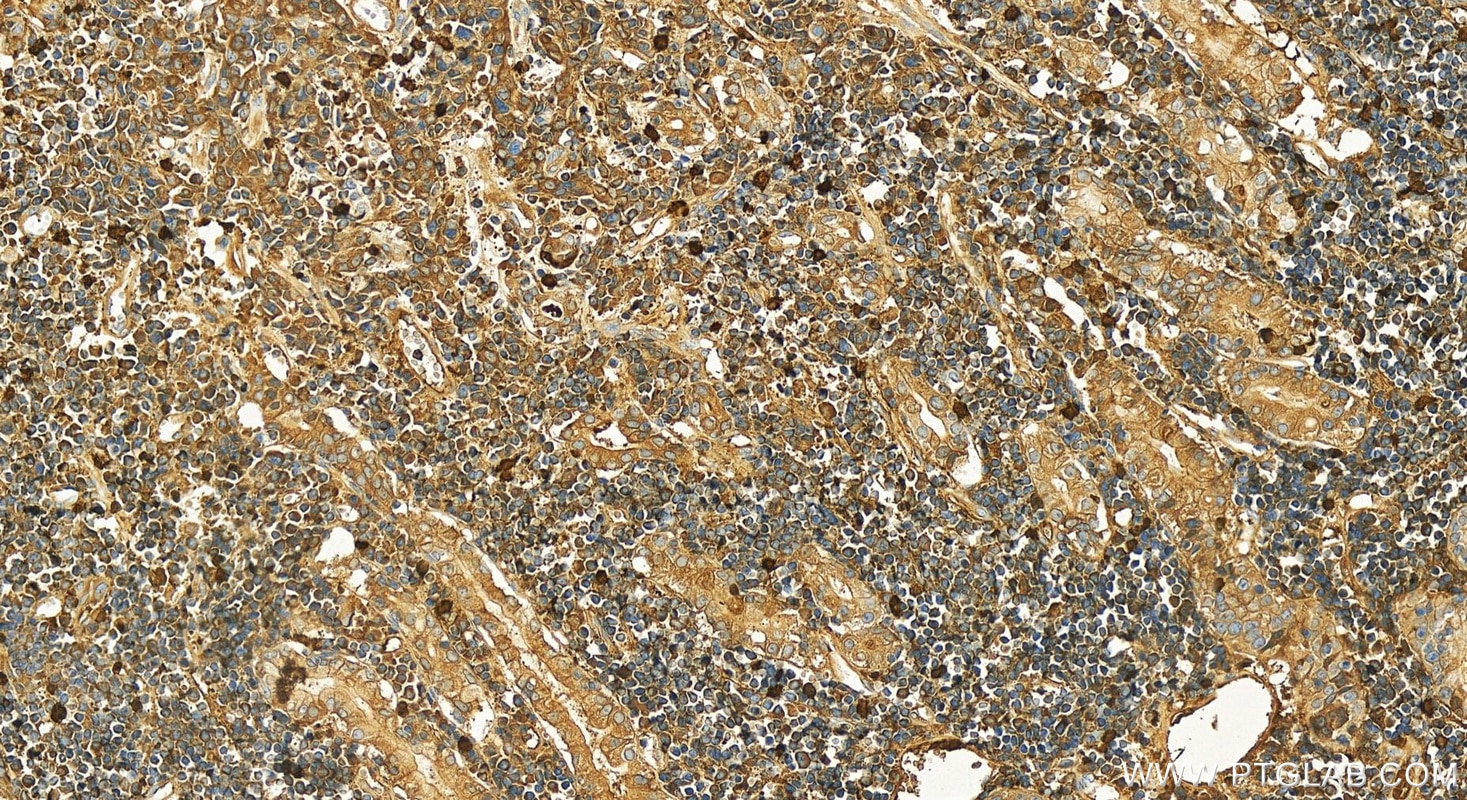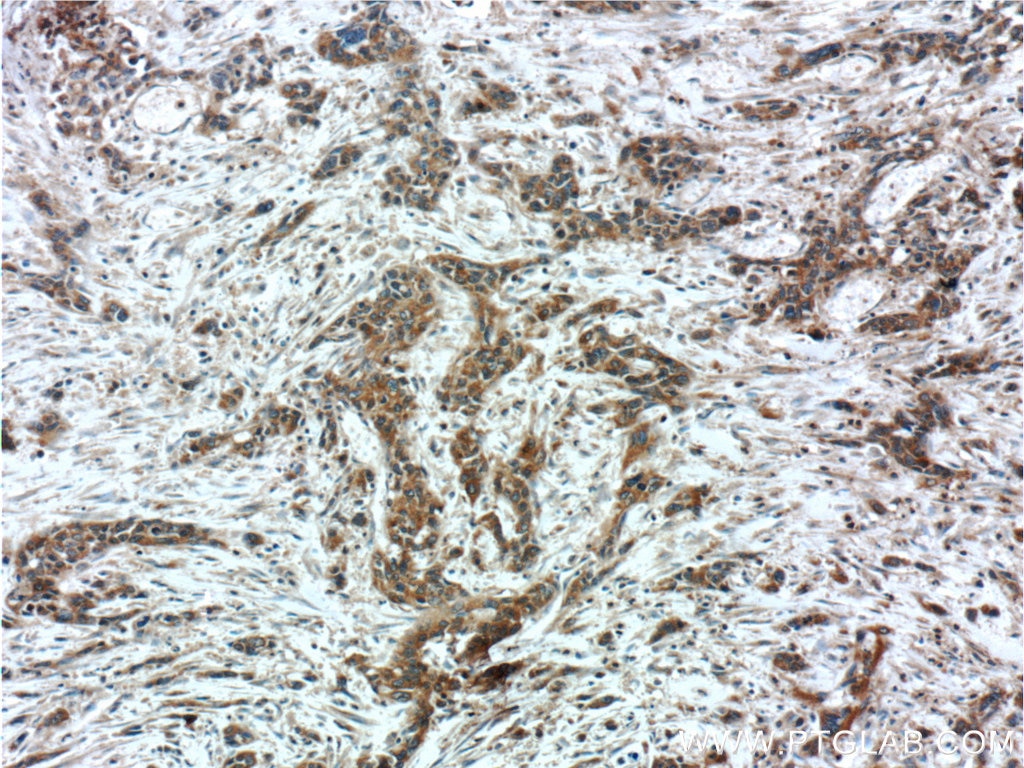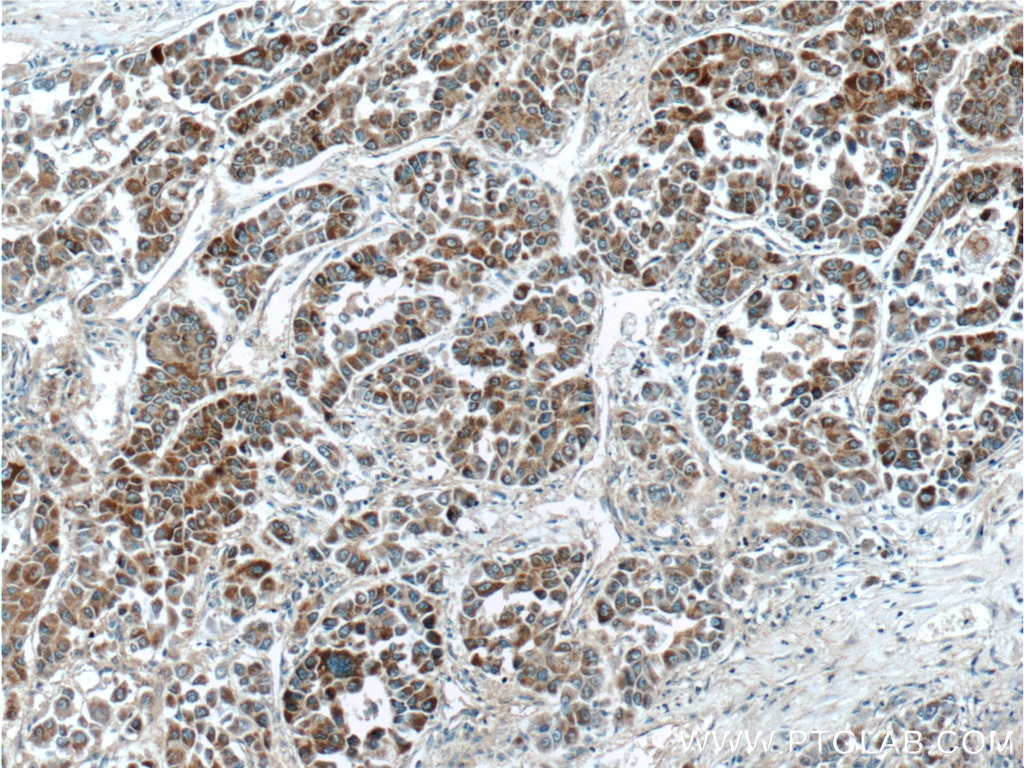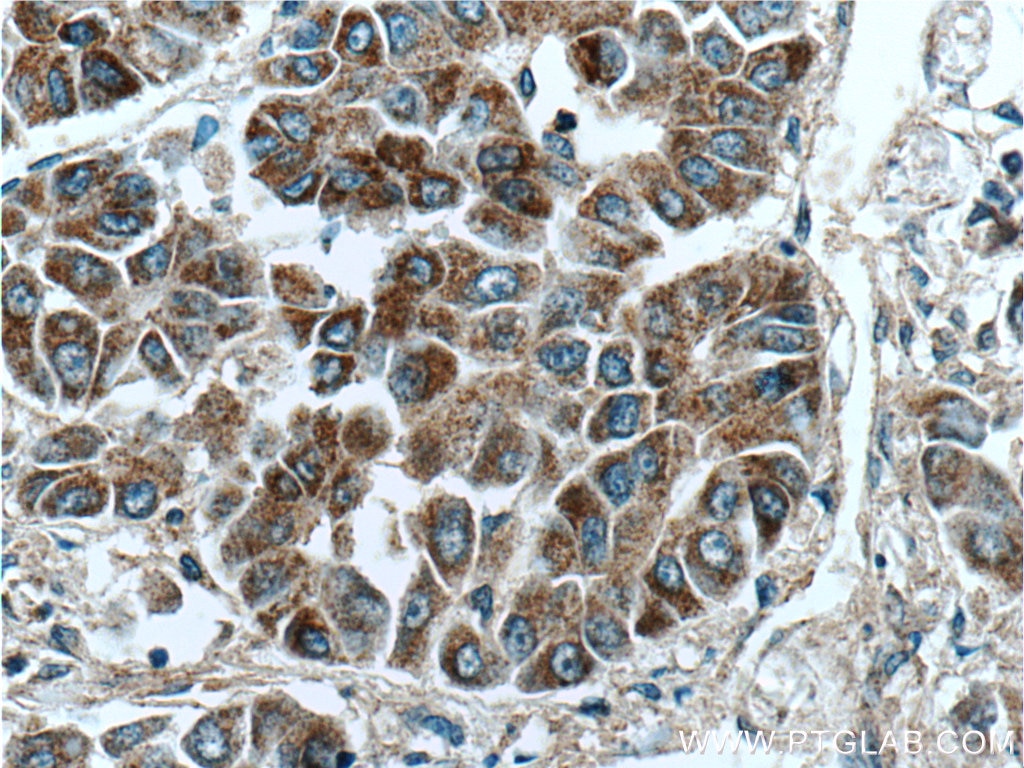Validation Data Gallery
Tested Applications
| Positive WB detected in | HEK-293 cells, HeLa cells, Jurkat cells, K-562 cells |
| Positive IHC detected in | human stomach cancer tissue, human liver cancer tissue Note: suggested antigen retrieval with TE buffer pH 9.0; (*) Alternatively, antigen retrieval may be performed with citrate buffer pH 6.0 |
Recommended dilution
| Application | Dilution |
|---|---|
| Western Blot (WB) | WB : 1:500-1:2000 |
| Immunohistochemistry (IHC) | IHC : 1:800-1:3200 |
| It is recommended that this reagent should be titrated in each testing system to obtain optimal results. | |
| Sample-dependent, Check data in validation data gallery. | |
Product Information
15601-1-AP targets PSMG3 in WB, IHC, ELISA applications and shows reactivity with human samples.
| Tested Reactivity | human |
| Host / Isotype | Rabbit / IgG |
| Class | Polyclonal |
| Type | Antibody |
| Immunogen | PSMG3 fusion protein Ag7984 相同性解析による交差性が予測される生物種 |
| Full Name | proteasome (prosome, macropain) assembly chaperone 3 |
| Calculated molecular weight | 13 kDa |
| Observed molecular weight | 13-18 kDa |
| GenBank accession number | BC004308 |
| Gene Symbol | PSMG3 |
| Gene ID (NCBI) | 84262 |
| RRID | AB_2878156 |
| Conjugate | Unconjugated |
| Form | Liquid |
| Purification Method | Antigen affinity purification |
| UNIPROT ID | Q9BT73 |
| Storage Buffer | PBS with 0.02% sodium azide and 50% glycerol , pH 7.3 |
| Storage Conditions | Store at -20°C. Stable for one year after shipment. Aliquoting is unnecessary for -20oC storage. |
Background Information
PSMG3, also named as C7orf48 and PAC3, is a chaperone protein which promotes assembly of the 20S proteasome. It may cooperate with PSMG1-PSMG2 heterodimers to orchestrate the correct assembly of proteasomes.
Protocols
| Product Specific Protocols | |
|---|---|
| WB protocol for PSMG3 antibody 15601-1-AP | Download protocol |
| IHC protocol for PSMG3 antibody 15601-1-AP | Download protocol |
| Standard Protocols | |
|---|---|
| Click here to view our Standard Protocols |
